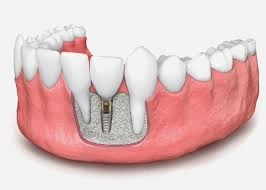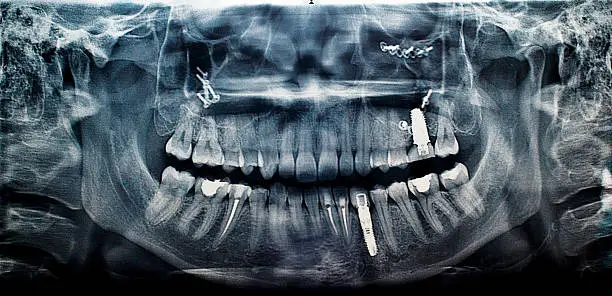Dental implant continues to serve as a dependable solution for tooth replacement, even among individuals experiencing diminished jawbone density. If you have been informed by your dental professional that your jawbone lacks the necessary strength for conventional implants, you are certainly not alone; this is a common concern among adults. Fortunately, advancements in dental science have provided innovative techniques that allow for successful restoration of one’s smile regardless of bone condition.
In this blog, we will examine the relationship between jawbone integrity and implant success, review state-of-the-art therapeutic options, and clarify the steps available to you. The intention is to empower you with knowledge so you can make well-informed choices regarding your dental health.
Bone Loss and Its Impact on Dental Implant Success

Dental implant requires a sufficient amount of healthy jawbone to achieve long-term stability. In cases where bone quality or quantity is compromised, additional preparatory procedures may be necessary before implant placement. Several factors can contribute to bone deterioration, including prolonged tooth loss, periodontal disease, traumatic injury, or extended use of dentures. Each of these can diminish bone density and volume, ultimately affecting the ability to securely anchor implants.
If the underlying bone is inadequate, implant integration may be unsuccessful, or the implants may fail to remain stable over time. Fortunately, contemporary dental practices offer solutions such as bone grafting, sinus augmentation, and the use of zygomatic implants to either restore or circumvent deficient areas. A thorough assessment of bone loss is essential in developing a tailored and effective implant treatment plan, ensuring optimal outcomes and long-term success.
Causes of Jawbone Deterioration
The jawbone relies on regular stimulation, primarily from the roots of natural teeth, to maintain its strength and integrity. When a tooth is lost, the underlying bone is deprived of this essential stimulus, leading to gradual bone resorption. Factors contributing to jawbone loss include untreated tooth loss, periodontal disease, poorly fitting dentures, trauma, infection, and systemic bone conditions such as osteoporosis.
In the absence of adequate stimulation, the bone progressively diminishes in both width and height. Over time, this deterioration can alter facial structure and create significant challenges for dental implant placement. Therefore, prompt intervention following tooth loss is crucial for preserving the jawbone and broadening future treatment possibilities.
How Bone Loss Affects Implant Stability
Dental implant fundamentally depends on a process known as osseointegration, wherein the titanium post establishes a stable connection with the jawbone. Adequate bone volume is critical; without it, this integration may fail, or, in some cases, implants cannot even be placed unless supplementary surgical procedures are performed. Insufficient bone may result in implant instability, delayed healing times, and a markedly increased risk of implant failure. Furthermore, ongoing bone loss can alter facial structure as the underlying support diminishes. Consequently, early identification and management of bone loss are imperative to ensure the long-term success and stability of dental implants.
Signs You May Have Bone Loss Before Implants
Although bone loss tends to progress quietly, certain clinical signs can reveal underlying issues. For instance, increased tooth mobility or shifting, as well as the development of new gaps between teeth, often signal changes in the supporting bone structure. Alterations in facial appearance such as hollowed or sagging cheeks may also be indicative of underlying bone deterioration. Additionally, dentures that no longer fit properly, or persistent gum inflammation, can serve as further warning signs.
These symptoms collectively suggest progressive bone loss, which requires timely assessment. Comprehensive dental examinations, typically involving radiographic imaging like X-rays or three-dimensional scans, are essential for accurately determining the extent of bone resorption. Such evaluations are crucial in guiding safe and effective planning for interventions, including dental implants.
Advanced Techniques for Dental Implants with Bone Loss

Advancements in dental technology have significantly expanded treatment possibilities for patients previously deemed unsuitable for implants due to bone loss. Procedures such as bone grafting and sinus augmentation, along with the introduction of short or angled implants, now allow clinicians to address sites with compromised bone. Additionally, the integration of three-dimensional imaging facilitates more precise implant placement, thereby improving both accuracy and overall success rates, even in challenging anatomical scenarios. As a result, individuals with a history of tooth loss or jaw deterioration can increasingly benefit from the functional and psychological advantages of dental implants. Ultimately, a thorough clinical evaluation and personalized consultation remain essential to determining the most appropriate approach for each patient’s unique needs and long-term objectives.
Bone Grafting Procedures Explained
Bone grafting, in clinical practice, serves as a foundational intervention when the jawbone lacks adequate structure to support dental implants. The procedure consists of augmenting the deficient area with bone material—this may be autogenous (sourced from the patient), allogenic (from a donor), or synthetic. The primary objective is to reinforce sites where bone loss has occurred due to factors such as tooth loss or periodontal disease.
Once grafted, the new material undergoes a process of biological integration with the existing bone, leading to restoration of both volume and density. This integration is critical: a stable, robust jawbone is necessary to provide a secure anchor for the dental implant. Without this preparatory step, the long-term success and function of the implant could be compromised. Bone grafting, therefore, is considered an essential prerequisite for predictable and durable implant outcomes.
Types of bone grafts include:
- Autografts (your own bone, usually from the hip or chin)
- Allografts (donor bone from a tissue bank)
- Xenografts (bone from another species, typically bovine)
- Alloplasts (synthetic materials)
After the graft is placed, it takes several months for the bone to integrate and become strong enough to support an implant.
Sinus Lift Surgery for Upper Jaw Implants
When significant bone loss occurs in the upper posterior jaw, particularly around the molar region, a sinus lift may become necessary. This surgical procedure involves elevating the sinus membrane to create adequate space for the placement of bone graft material.
A sinus lift is particularly indicated in the following situations:
- Insufficient bone height in the upper jaw
- Proximity of the maxillary sinuses to the intended implant site
- The need to increase vertical bone dimension for successful implant placement
The recovery period following a sinus lift generally varies between 4 and 9 months, depending on the volume of grafted bone introduced during the procedure.
Ridge Expansion: When and How It’s Done
In instances where the jawbone is insufficiently wide, clinicians may employ a technique known as ridge expansion. This procedure entails carefully widening the alveolar ridge and placing bone graft material to augment the area. Ridge expansion can be performed in stages or, in select cases, concurrently with dental implant placement. This method is particularly advantageous for reestablishing both the form and volume of the jaw, notably in the anterior region where optimal aesthetics are paramount.
Choosing the Right Implant Type for Compromised Bone
In cases where bone loss is pronounced, conventional grafting isn’t always necessary thanks to alternative implant systems. For instance, zygomatic implants can be anchored directly into the cheekbone, offering reliable support even when the upper jaw lacks sufficient bone. Additionally, options like short or angled implants are designed to bypass areas where bone is too thin, preserving both function and aesthetics. These methods are particularly advantageous for individuals hoping to avoid prolonged recovery periods associated with traditional grafting. Ultimately, a thorough clinical assessment is essential to determine the most appropriate approach for each patient’s unique situation.
Short Implants vs. Traditional Implants
Short implants are designed for areas with limited bone height. They’re ideal for:
- Molars and premolars
- Patients who cannot undergo grafting
- Minimally invasive treatment plans
Despite their reduced length, short implants still integrate well and offer stability—especially when supported by modern surface technology and design.
Zygomatic Implants: An Alternative Approach
In cases of extreme bone loss in the upper jaw, zygomatic implants anchor into the cheekbone (zygomatic bone) instead of the jawbone. They’re longer and specially angled to bypass areas where bone is missing.
This technique:
- Avoids the need for bone grafts
- Offers immediate function in many cases
- Requires advanced surgical skill
Zygomatic implants are often used for patients who’ve been told they’re not candidates for traditional implants due to severe resorption.
All-on-4 Implants for Patients with Bone Loss
The All-on-4 technique represents a significant advancement in dental implantology for individuals experiencing total or near-total tooth loss. Rather than employing numerous implants, this method utilizes four strategically positioned implants—two of which are angled posteriorly to engage with denser regions of the jawbone. This approach frequently eliminates the necessity for bone grafting, particularly beneficial for patients with compromised bone volume.
All-on-4 is particularly suitable for patients who struggle with unstable dentures or have experienced significant bone resorption. By optimizing implant placement, clinicians can achieve substantial stability and support for a full-arch prosthesis, even when bone height is limited.
Among the notable advantages are reduced treatment timeframes, the possibility of immediate function with same-day provisional teeth, and a decrease in the number of required surgical procedures compared to traditional protocols. For many, the All-on-4 system offers a transformative solution that restores oral function, enhances comfort, and significantly improves quality of life.
Recovery and Care After Bone Augmentation and Implant Placement
A comprehensive understanding of the healing process and the appropriate strategies to support recovery are essential for optimizing outcomes in implant dentistry. Following placement, the body initiates osseointegration, a vital phase during which the dental implant integrates with the jawbone. This process typically spans several months and is fundamental for ensuring the long-term stability of the prosthetic tooth. Adhering to recommended post-operative care, such as maintaining strict oral hygiene, consuming a soft-food diet, and refraining from smoking or engaging in strenuous activities, can significantly reduce the risk of complications. Diligently following the dentist’s instructions throughout the recovery period is integral for promoting optimal healing and increasing the likelihood of implant success.
Healing Time Expectations
Recovery times following implant-related procedures fluctuate considerably, hinging on individual patient health and the specifics of the intervention. For instance, bone grafts frequently require a healing window of approximately three to nine months to achieve proper integration and restore adequate jawbone volume. In cases where a sinus lift is performed, the anticipated healing period generally spans six to nine months prior to implant placement.
After implants are positioned, they typically necessitate an additional three to six months for successful osseointegration, the biological process through which the implant bonds with the jawbone. During this entire timeframe, dental professionals will conduct routine follow-up appointments, employing clinical examinations and imaging to monitor healing progression and to promptly address any complications. Only when the surgical site has demonstrated full stability will the practitioner proceed with the final restorative phase, which may involve placement of a crown, bridge, or denture.
Tips for Maintaining Bone Health Post-Surgery
To support the stability of dental implants and foster long-term success, robust post-surgical care is essential. It is strongly advised to abstain from smoking and to moderate alcohol intake, as both can significantly impede the healing process and hinder osseointegration. In the immediate recovery period, a soft-food diet is recommended to minimize mechanical stress on the surgical site.
Meticulous oral hygiene must be maintained, with gentle brushing and rinsing as directed by your dental professional. Adherence to prescribed antibiotics and medications is imperative for preventing infection and promoting optimal recovery. Scheduled follow-up appointments are critical, as they enable timely monitoring of the healing trajectory and allow for the early identification of potential complications.
It is important to recognize that bone health continues to evolve well after the initial surgical intervention; therefore, sustained and attentive oral care remains vital for ensuring the longevity of your dental implants.
Signs of Complications to Watch For
While dental implant surgery is generally considered safe and boasts a high success rate, vigilance for potential complications remains crucial. Patients should monitor for persistent swelling, prolonged pain, or ongoing bleeding, as these may indicate underlying issues. The presence of pus or any unusual discharge, noticeable implant mobility, fever, chills, or delayed healing beyond the anticipated recovery period should also raise concern. Should any of these symptoms arise, it is important to contact your dental professional promptly, as early intervention can mitigate the risk of more serious complications.
Frequently Asked Questions (FAQs)
1. Can I get dental implants if I have severe bone loss?
Yes, dental implants are still possible even with bone loss, but they may require preparatory procedures to ensure long-term success. Treatments like bone grafting or sinus lifts can rebuild and strengthen the jawbone to support the implant. In some cases, alternative systems such as All-on-4 or zygomatic implants bypass the need for traditional grafting altogether. These innovations have expanded options for patients who were once considered ineligible. Thanks to modern techniques and careful planning, even those with advanced bone loss can often enjoy the stability and confidence of implant-supported teeth. A thorough consultation will determine the best approach for your specific needs.
2. What is the success rate of implants with bone grafting?
When performed by an experienced provider, the success rate of dental implants with grafting is impressively high, typically ranging from 90% to 95%. This outcome reflects careful planning, precise surgical technique, and patient compliance during recovery. Factors that influence success include adequate healing time, excellent oral hygiene, and management of conditions like diabetes or osteoporosis. Smoking and poor follow-up care can lower these odds, so following your provider’s post-op instructions is essential. With the right team and commitment, graft-assisted implants can offer lasting stability and function for years to come.
3. How painful is bone graft surgery?
Most patients report mild to moderate discomfort after dental implant surgery, often comparing it to the feeling of a typical tooth extraction. The initial soreness usually peaks within the first 48 hours and gradually improves. Pain is typically well-managed with prescribed or over-the-counter medication. Some swelling and minor bruising around the gums, cheeks, or jaw are also expected but should subside within a few days. Cold compresses and soft foods can help ease recovery. Most people return to normal activities within a week, provided they follow their dentist’s aftercare instructions.
4. How long does it take to recover after bone augmentation?
Recovery time depends on the specific procedure performed. Bone grafts typically require 3 to 9 months to fully integrate and create a stable foundation for implants. Once grafted bone is ready, the dental implant itself generally takes an additional 3 to 6 months to heal through a process called osseointegration. Your dental provider will monitor your progress with follow-up visits and imaging to ensure proper healing at each stage. Only when the site is fully stable will the next phase of treatment such as placing the crown or bridge be scheduled. Patience during this process leads to stronger, longer-lasting results.
5. Are there alternatives to implants if I can’t have bone grafts?
Yes, there are viable alternatives for patients who can’t undergo traditional bone grafting. Options like zygomatic implants, which anchor into the cheekbone, or short implants designed for limited bone height, can provide stable support without extensive grafting. The All-on-4 technique also allows for full-arch restoration using just four implants placed at strategic angles, often avoiding the need for bone augmentation. In cases where implants aren’t feasible, advanced removable dentures with enhanced fit and aesthetics may be recommended. Your dental specialist will assess your bone quality, health status, and goals to determine the most effective approach.
If you’ve been told you can’t have dental implants due to bone loss, don’t give up hope. New surgical innovations and personalized treatment plans make it possible for more patients to enjoy the confidence and function of permanent tooth replacement.
Start by scheduling a consultation at Graham Park Dental. They’ll evaluate your bone health, review your options, and recommend the best path forward. Your smile, and your quality of life, deserve nothing less than the best care modern dentistry can offer.


